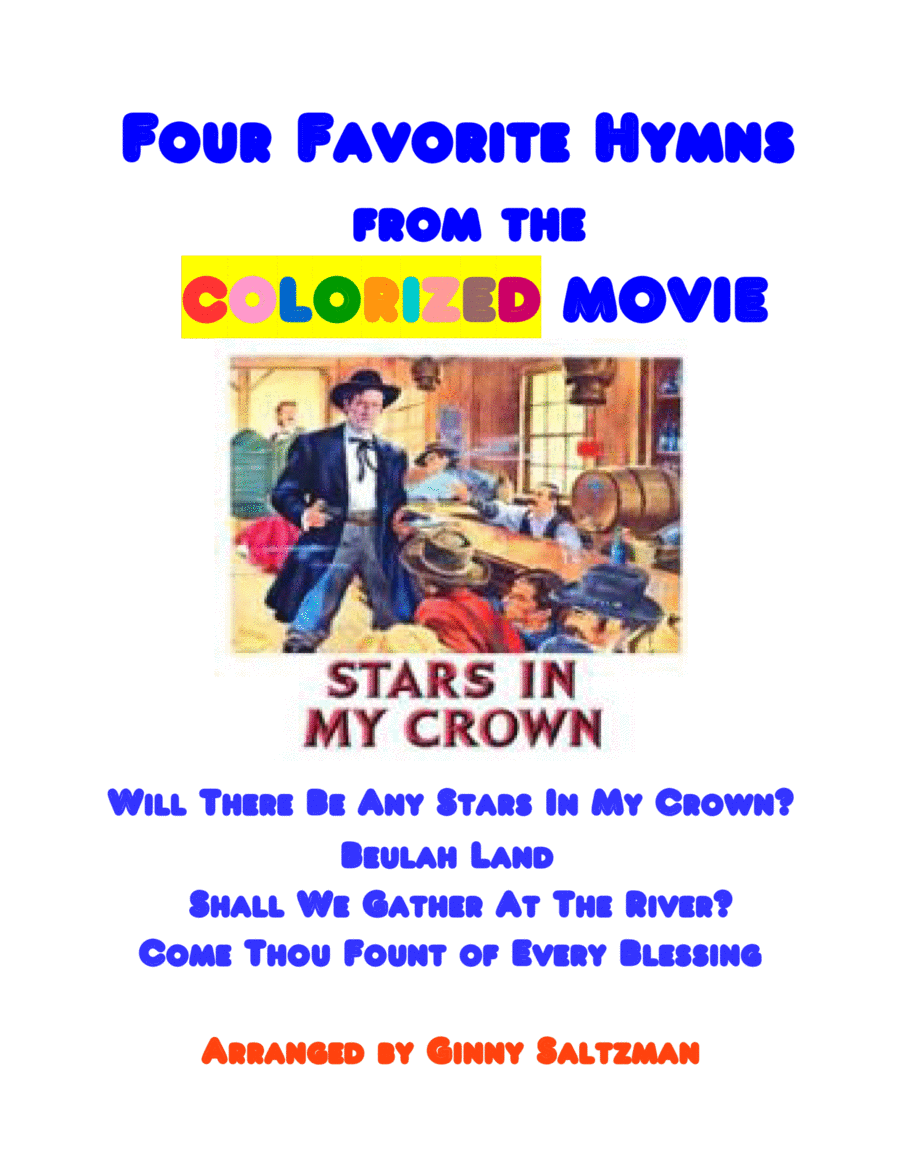Instrumental Duet,Piano B-Flat Clarinet,Flute,Instrumental Duet,Piano - Level 2 - Digital Download SKU: A0.1180477 Composed by John R. Sweeny, Robert Lowery, Robert Robinson, John Wyeth. Arranged by Ginny Saltzman. 19th Century,Christian,Praise & Worship,Religious. 12 pages. Ginny's House of Music #780380. Published by Ginny's House of Music (A0.1180477). These are the 4 hymns in the colorized movie Stars in My Crown.(1) Will There Be Any Stars in My Crown? - An old favorite simplified hymn arrangement on Late Elementary-Early Intermediate Level, in the Key of G, with lyrics and Guitar chords included. From the scriptures Daniel 12:3 And they that be wise shall shine as the brightness of the firmament; and they that turn many to righteousness as the stars for ever and ever. 1 Peter 5:4 And when the chief Shepherd shall appear, ye shall receive a crown of glory that fadeth not away. 1 Thessalonians 2:19-20 For what is our hope, or joy, or crown of rejoicing? Are not even ye in the presence of our Lord Jesus Christ at his coming? For ye are our glory and joy.(2) Shall We Gather At The River? - An old favorite hymn with simplified Early Intermediate Level Piano Accompaniment, Lyrics, and Guitar chords. Very special arrangement with duet notation using the Violin and Flute. From the scriptures Revelation 22: 1 And he shewed me a pure river of water of life, clear as crystal, proceeding out of the throne of God and of the Lamb. 2 In the midst of the street of it, and on either side of the river, was there the tree of life, which bare twelve manner of fruits, and yielded her fruit every month: and the leaves of the tree were for the healing of the nations.(3) Beulah Land - An old favorite hymn with simplified Late Elementary - Early Intermediate Level Piano Accompaniment, Lyrics, in the Key of G. From the scriptures Deuteronomy 8: 7 For the Lord thy God bringeth thee into a good land, a land of brooks of water, of fountains and depths that spring out of valleys and hills; 8 A land of wheat, and barley, and vines, and fig trees, and pomegranates; a land of oil olive, and honey; 9 A land wherein thou shalt eat bread without scarceness, thou shalt not lack any thing in it; a land whose stones are iron, and out of whose hills thou mayest dig brass. 10 ¶ When thou hast eaten and art full, then thou shalt bless the Lord thy God for the good land which he hath given thee. Isaiah 33:17 Thine eyes shall see the king in his beauty: they shall behold the land that is very far off.(4) Come Thou Fount of Every Blessing - An old favorite hymn in the Key of C, with simplified Early Intermediate Level Piano Accompaniment, Lyrics, and additional melody with the Bb Clarinet. From the scriptures 1 Corinthians 15:10 But by the grace of God I am what I am: and his grace which was bestowed upon me was not in vain; but I laboured more abundantly than they all: yet not I, but the grace of God which was with me.1 Samuel 7 :12 Then Samuel took a stone, and set it between Mizpeh and Shen, and called the name of it Eben-ezer, saying, Hitherto hath the Lord helped us.
